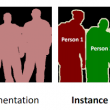Executive Summary:
By now, you’ve probably heard of generative artificial intelligence (AI) programs like GitHub Copilot, ChatGPT, and DALL-E. They’re generating a lot of interest because anyone can use them to quickly create content, such as email subject lines, code functions, and artwork.
Understanding generative AI, generative AI models, etc., is crucial, given its potential to revolutionize content creation across various industries. This article will discuss generative AI, including what it is, how it functions, some applications in the real world, and its models.

Generative AI: What is it?
Generative AI, in its broadest sense, describes a class of AI models and tools intended to produce original material, such as writing, photographs, videos, music, or code. Deep learning algorithms and neural networks are just two of the tools generative AI uses to find patterns and produce new results based on them. For creating information, code, graphics, and other things, businesses and individuals (including software developers and engineers) are increasingly looking to generative AI technologies.
How is generative AI implemented?
A cue may be presented to Generative AI Models as text, an image, a video, a design, musical notation, or any other input the AI system can understand. Then, different AI systems respond to the suggestion by returning fresh content. For example, essays, problem-solving techniques, and lifelike impersonations made from a person’s images or audio can all be included as content.
Early iterations of generative AI required data submission through an API or another laborious procedure. Developers must become familiar with specialized tools and create applications using programming languages like Python.
Pioneers in generative AI are creating better user interfaces that enable you to express a request in plain English. Following a first answer, you can further tailor the outcomes by commenting on the tenor, style, and other aspects you want the automatically generated text to portray.
Why Is Generative Ai Currently A Hot Topic?
The phrase “generative AI” is getting much attention due to the growing acceptance of generative AI applications like OpenAI’s ChatGPT and DALL-E. The conversational chatbot and the AI picture generator use generative AI to quickly create new material, grabbing attention with computer code, essays, emails, social media captions, images, poems, and more.
In just one week since its introduction, ChatGPT has surpassed one million members, demonstrating its immense popularity. Other businesses like Google, Microsoft’s Bing, and Opera have flocked to the generative AI market to compete. As more businesses get involved and uncover new applications, the enthusiasm surrounding generative AI will continue to rise.
What Applications Of Generative Ai Exist?
Virtually any type of material may be created using Generative AI Models in various use scenarios. Modern innovations like GPT, which can be tailored for many applications, are making the technology more approachable for users of all types. The following are some Generative AI Solutions and cases for generative AI:
- Putting chatbots into use for technical help and customer service.
- Using sophisticated fakes to imitate humans, even specific persons.
- Enhancing the dubbing of films and educational materials in several languages.
- Writing term papers, resumes, dating profiles, and email responses.
- A specific style of photorealistic art production.
- Video product demonstrations that are improved.
- Recommending novel pharmacological substances for testing.
- Designing tangible items and structures.
- Enhancing fresh chip designs.
- Composing music in a particular tone or style.
Generative Versus Discriminative Modeling
We must examine the differences between discriminative and generative modeling to comprehend the generative AI concept.
- Discriminative modeling
Existing data points (such as pictures of cats and guinea pigs) are categorized using discriminative modeling. It usually applies to activities requiring supervised machine learning.
- Generative modeling
Generative modeling aims to comprehend the dataset’s structure and produce similar instances (such as modeling a realistic image of a cat or guinea pig). It primarily pertains to machine learning activities that are unsupervised or semi-supervised.
The discriminative and generative modeling fields are expanding as neural networks become increasingly pervasive daily. Let’s get into more detail about each now.
- Discriminative Modelling
Machine learning models classify incoming data using discriminative algorithms and forecast the label or class to which a data item belongs. For example, discriminative algorithms can be utilized to distinguish cats from guinea pigs based on two characteristics, such as the presence of the tail and the size of the ears. The discriminative model compresses information about the distinctions between cats and guinea pigs without attempting to comprehend what a cat and a guinea pig are.
- Generative Modelling
To forecast features given a specific label, generative algorithms are utilized. While generative models concentrate on the distribution of distinct classes and features, discriminative algorithms concentrate on the relationships between x and y. As a result, even those not part of the training set can learn to replicate images of cats and guinea pigs. Examples of challenges where generative modeling can produce spectacular outcomes include GANs and transformer-based algorithms.
Generative AI’s shadow side:
Technology, no matter what it is, can be used negatively and positively. There is no exception with generative AI, of course. But, at the time, there were a few difficulties.
- Shallow and pseudo-fake pictures: Deep fake technology has a terrible reputation despite being initially developed for amusement. Deep fakes have been used by people not just for entertainment but also for harmful purposes since they are publicly accessible to all users via applications like FakeApp, Reface, and DeepFaceLab.
- Difficult to control: We don’t want to imply that machines will turn against people and end the planet when we say this. We’re excellent at it. Let’s face it. However, since generative AI can self-learn, it is challenging to manage its behavior. The results can frequently be very different from what you anticipated.
- But as we all know, with obstacles, technology can advance and expand. Additionally, advancements like generative AI have downsides that can be avoided or greatly reduced thanks to techniques like responsible AI.










